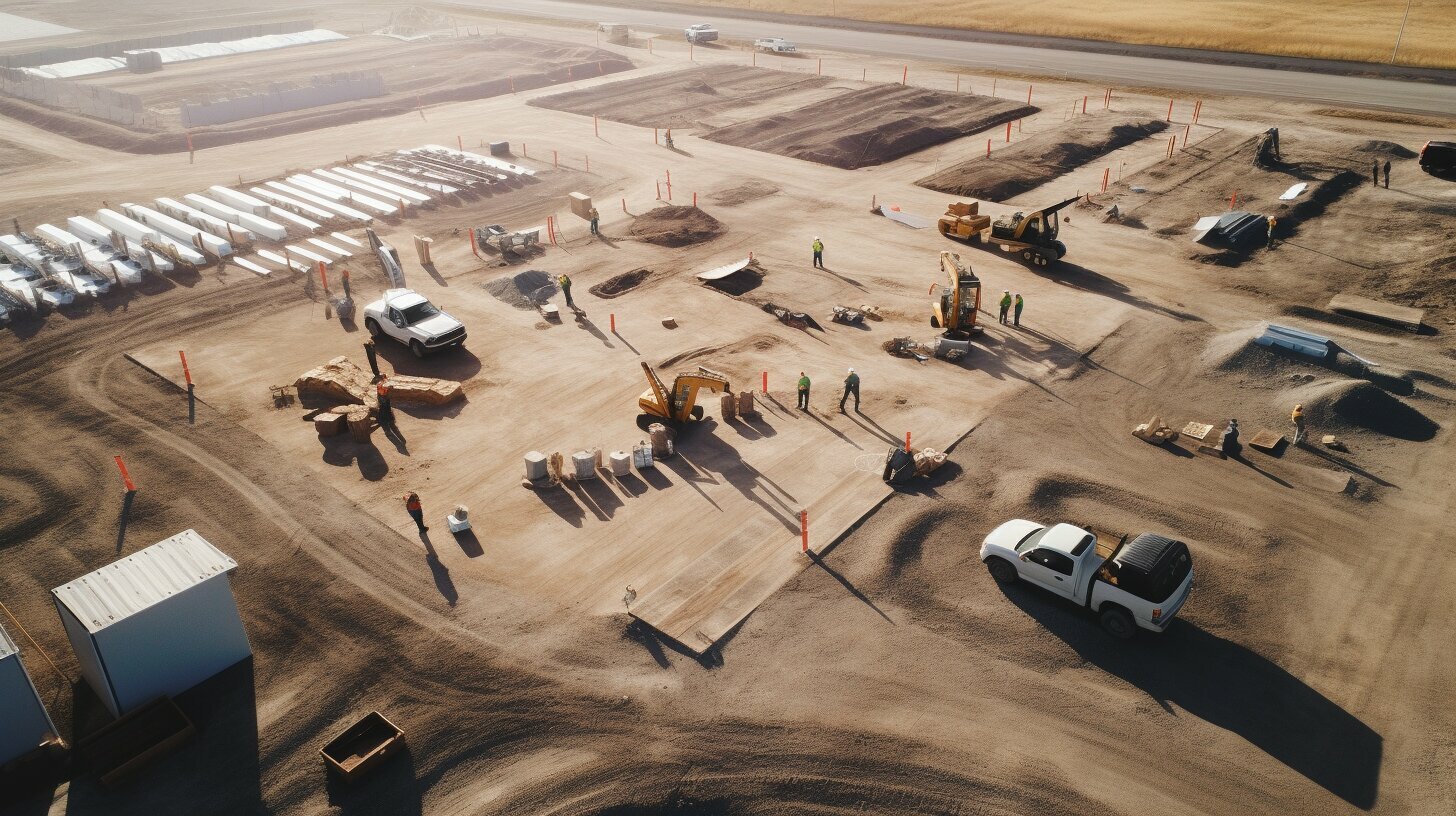Did you know that businesses that implement effective conversion models can see a 40% increase in their conversion rates?
With the ever-increasing competition in the online marketplace, it has become crucial for companies to optimize their conversion rates and maximize their return on investment (ROI). But what exactly is a conversion model, and how can it help you achieve better results?
In this article, we’ll explore the ins and outs of conversion rate optimization, including customer journey mapping, user experience design, A/B testing, funnel analysis, conversion tracking, marketing automation, and lead generation strategies. By understanding and implementing these techniques, you’ll unlock your website’s full potential and drive sustainable growth for your business in 2024 and beyond.
Setting Up Google Conversion Tracking
Google Ads conversion tracking is crucial for evaluating the success of advertising campaigns and understanding the actions visitors take on your website. You can track important metrics such as sales, leads, calls, email sign-ups, and contact form fill-outs by setting up Google conversion tracking. This data is invaluable for gaining insights into your Return on Advertising Budget (ROAS) and optimizing your advertising budgets.
There are various conversion sources that you can track using Google Ads, including website actions, app downloads, phone calls, and custom sources. By leveraging Google Analytics goals (known as “Events” now) along with Google Ads, you can achieve comprehensive conversion tracking and gain a deeper understanding of user behavior.
The setup process for Google conversion tracking involves several important steps:
- Select the conversion source: Choose whether you want to track website actions, app downloads, phone calls, or custom sources.
- Define the conversion action: Specify the specific action you want to track, such as a purchase, lead form submission, or app installation.
- Set conversion values and counting methods: Assign a value to each conversion action and choose whether you want to count every conversion or unique conversions.
- Determine the conversion window: Decide how long after an ad interaction a conversion will be attributed to the ad.
- Choose the view-through conversion window: If you’re running display campaigns, select the time frame in which view-through conversions will be counted.
- Select the attribution model: Decide how conversions should be attributed to specific interactions in the customer journey, whether it’s the first interaction, last interaction, or a combination of multiple touchpoints.
Additionally, you can further enhance your conversion tracking accuracy by importing conversions from other sources, such as call conversions, website calls, store visits, or CRM conversions.
Example of Google Conversion Tracking Setup
| Conversion Source | Conversion Action | Conversion Value | Counting Method |
|---|---|---|---|
| Website Actions | Purchase | $100 | Every Conversion |
| Lead Form Submission | $10 | Unique Conversions | |
| App Downloads | Install | $5 | Every Conversion |
With effective Google conversion tracking in place, you’ll have the data you need to measure the success of your advertising campaigns, optimize your marketing efforts, and drive valuable actions on your website.
Increasing Conversion Rate in 2024
In order to increase your conversion rate in 2024, it’s essential to take a holistic approach to conversion rate optimization. You can significantly improve your conversion rate and overall website performance by examining key areas such as data analysis, the conversion funnel, website copy optimization, user experience optimization, landing page optimization, call-to-action optimization, and form and checkout simplification.
Data Analysis for Insights
Start by analyzing quantitative and qualitative data to gain valuable insights into user behavior. This will help you identify specific pain points and areas for improvement within the user journey, enabling you to make data-driven decisions.
Optimizing the Conversion Funnel
The conversion funnel is a critical component in achieving higher conversion rates. By examining each stage of the funnel, you can identify potential drop-off points and optimize the user journey to guide visitors seamlessly towards conversion.
Website Copy Optimization
Your website copy plays a crucial role in influencing user decisions. Optimize your copy to clearly communicate your value propositions and benefits, while also incorporating relevant keywords for better SEO performance.
User Experience Optimization
Creating a seamless and enjoyable user experience is key to improving conversion rates. Optimize your website’s navigation, ensure it is mobile-responsive, and enhance page loading speed to provide users with an optimal browsing experience.
Landing Page Optimization
Landing pages are often the first point of contact for visitors. Optimize your landing pages by removing distractions and focusing on the desired conversion action. Ensure your call-to-action is compelling, creating a sense of urgency that motivates users to take the desired action.
Call-to-Action Optimization
Your call-to-action buttons are crucial for driving conversions. Optimize them by using clear, concise language and compelling visuals that grab attention and entice users to take action.
Form and Checkout Simplification
The process of filling out forms and completing checkouts can be a significant barrier to conversions. Simplify these processes as much as possible by reducing the required fields and steps, making it quick and easy for users to convert.
| Optimization Strategy | Description |
|---|---|
| Data Analysis | Utilize quantitative and qualitative data to gain insights into user behavior. |
| Conversion Funnel Optimization | Analyze and optimize each stage of the conversion funnel to reduce drop-off points. |
| Website Copy Optimization | Optimize website copy to clearly convey value propositions and incorporate relevant keywords. |
| User Experience Optimization | Enhance website navigation, mobile responsiveness, and page loading speed for an optimal user experience. |
| Landing Page Optimization | Remove distractions, focus on the desired conversion action, and create compelling call-to-actions. |
| Call-to-Action Optimization | Create compelling call-to-action buttons that grab attention and entice users to take action. |
| Form and Checkout Simplification | Streamline the form and checkout processes to reduce friction and improve conversion rates. |
The Role of Conversion Modeling in Conversion Tracking
Conversion modeling is a crucial component of conversion tracking, enabling businesses to estimate online conversions that cannot be directly observed. With the help of advanced machine learning algorithms, such as those used by Google, trends between observed conversions and unattributed conversions are analyzed to make accurate predictions and update reported conversions. This process enhances the accuracy of reporting and enables businesses to optimize their advertising campaigns and improve automated bidding strategies.
Continuous validation and rigorous testing are conducted to ensure the accuracy of conversion modeling. This iterative approach allows for ongoing improvements and fine-tuning of the modeling algorithms. Every effort is made to deliver precise and reliable conversion attribution results, ensuring businesses have actionable data for decision-making.
Privacy is a top priority during the conversion modeling process. Google strictly adheres to privacy regulations and does not use personally identifiable information in the modeling algorithm. This commitment to user privacy ensures that businesses can leverage conversion modeling without compromising customer data confidentiality.
Furthermore, the modeling algorithm is customized for each business to reflect their unique customer behavior. By incorporating specific attributes and intricacies into the algorithm, businesses can achieve a higher level of accuracy in conversion attribution. This customized modeling approach allows for a more tailored and effective analysis of conversion data.
| Advantages of Conversion Modeling in Conversion Tracking | SEO Keywords |
|---|---|
| 1. Provides estimates for unobserved online conversions | conversion modeling, observed conversions, modeled conversions |
| 2. Enhances accuracy of reporting | conversion modeling, accuracy, conversion attribution |
| 3. Optimizes advertising campaigns and automated bidding | conversion modeling, optimization, automated bidding |
| 4. Complies with privacy regulations | conversion modeling, privacy, personally identifiable information |
| 5. Customized to reflect unique customer behavior | conversion modeling, customized modeling algorithm, customer behavior |
Conclusion
In conclusion, implementing an effective conversion model and utilizing conversion rate optimization strategies are essential in 2024 to improve conversion rates and achieve a better ROI. Businesses can unlock their site’s full potential and drive sustainable growth by focusing on website optimization, user experience design, data analysis, and continuous testing and optimization.
Website optimization involves enhancing various aspects of the site, such as improving page loading speed, streamlining the navigation, and optimizing landing pages. By providing a seamless and user-friendly experience, businesses can effectively guide visitors towards the desired conversion actions and increase their likelihood of conversion.
Data analysis plays a crucial role in understanding user behavior, identifying areas of improvement, and making informed business decisions. By analyzing qualitative and quantitative data, businesses can gain valuable insights into user preferences, conversion funnel performance, and the effectiveness of various marketing strategies.
By following the best practices outlined in this article and continuously refining their conversion model, businesses can maximize their conversion rates and ultimately achieve their conversion goals. In the highly competitive online landscape of 2024, prioritizing conversion rate optimization is a key driver of success and sustainable growth.
FAQ
What is a conversion model and how does it relate to conversion rate optimization?
A conversion model is a framework or strategy that businesses use to optimize their conversion rates. It involves techniques like customer journey mapping, user experience design, A/B testing, funnel analysis, conversion tracking, marketing automation, and lead generation strategies to improve the effectiveness of conversions on their website or app.
How does Google conversion tracking work and why is it important?
Google conversion tracking is a tool that allows businesses to evaluate the success of their advertising campaigns and understand the actions visitors take on their website. It tracks metrics such as sales, leads, calls, email sign-ups, and contact form fill-outs to provide valuable data for optimizing advertising budgets and improving return on advertising spend (ROAS).
What is the process for setting up Google conversion tracking?
To set up Google conversion tracking, businesses need to select the conversion source, define the conversion action, set conversion values and counting methods, determine the conversion window and view-through conversion window, and select the attribution model. These steps enable accurate tracking and measurement of conversions across various sources, such as website actions, app downloads, phone calls, and custom sources.
How can businesses increase their conversion rate in 2024?
Businesses can increase their conversion rate by taking a holistic approach to conversion rate optimization. This involves analyzing quantitative and qualitative data to gain insights into user behavior, optimizing the conversion funnel to reduce drop-off points, optimizing website copy and SEO, improving user experience design, optimizing landing pages and call-to-actions, and simplifying online forms and checkouts.
What role does conversion modeling play in conversion tracking?
Conversion modeling helps estimate online conversions that cannot be directly observed. Google uses machine learning algorithms to analyze trends and make accurate predictions. Conversion modeling improves the accuracy of conversion tracking, optimization of advertising campaigns, and automated bidding. Google prioritizes user privacy, and the modeling algorithm is customized for each business to reflect their unique customer behavior.







